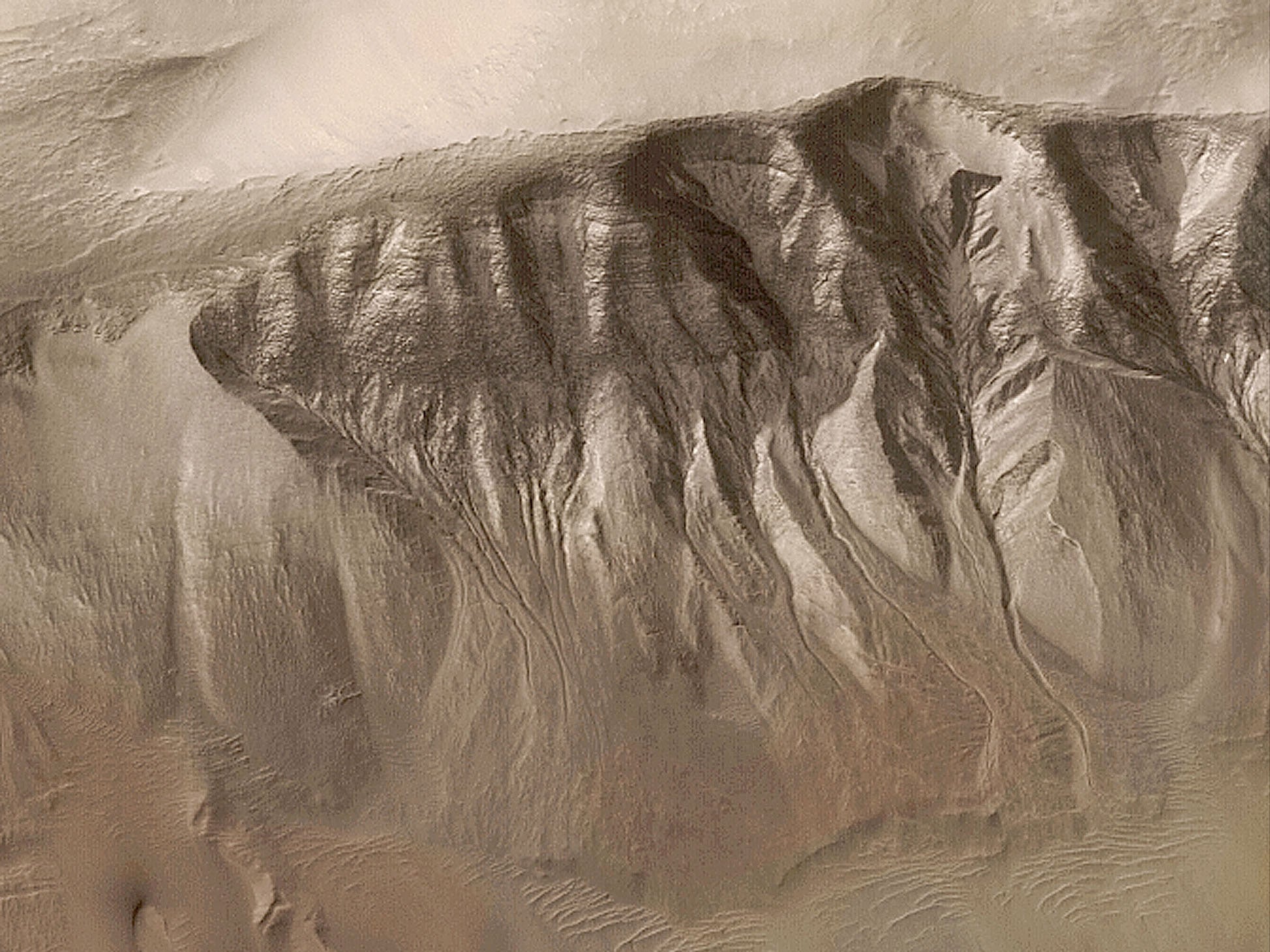The Independent's journalism is supported by our readers. When you purchase through links on our site, we may earn commission.
Gullies on Mars could have been formed by dry ice and not running water, new study finds
Rock formations on the surface of Mars similar to those on Earth could have been formed by frozen carbon dioxide, not running water

Gullies on Mars' rocky surface which some believe were carved out by running water could actually have been created by dry ice, new research has found.
The study, recently published in the high-profile Nature Geoscience journal, may have weakened the theory that Mars could have once hosted life as a much warmer and wetter planet billions of years ago.
A number of Mars missions conducted since the 1970s have seen these stream-like channels, which look like water-carved gullies here on Earth.
These formations are significant because they suggest that running water may have once existed on Mars - one of the conditions needed to support life as we know it.
Nasa announced in September that their Mars Reconnaissance Orbiter had carefully analysed dark streaks in these gullies and found that they could be created by flowing liquid water, which appears seasonally.
However, the new explanation proposes that large amounts of liquid water would have been needed fairly recently, not billions of years ago, to create the kind of gullies that we see on the Martian surface.
Instead, it suggests that frozen CO2 in surface frost and Mars's icecaps would warm up and become a translucent ice layer during the planet's spring.
With this translucent layer in place, sunlight could penetrate through it and sublime it into a vapour - if pressure then builds up under the ice layer due to this vapour formation, it could blow out, bringing rocks and earth with it and creating these gullies over long periods of time.
The theory is backed up by complex computer models, which the researchers used to look at seasonal frost patterns, allowing them to determine the areas where these blowouts would be most likely to occur. They found that the model's predicitions lined up closely with the locations of the Martian gullies.
If this theory is correct, it doesn't neccessarily mean that there's no flowing water on Mars, but it would significantly change what we believe about Mars's history and possibly reduce the chances that life has ever existed on its surface.
Writing in the study, authors Cedric Pilorget and Francois Forget said: "We conclude that Martian gullies can result from geologic dry ice processes that have no terrestrial analogues and do not require liquid water."
The theories about liquid water attempt to explain the Martian gullies by comparing their formations to geological processes we see on Earth, but the scientists behind the study are claiming that they could have been formed in ways not found on our planet.
Nasa, the European Space Agency and the Russian Federal Space Agency all have missions to Mars planned in the next five years - so further analysis during these rounds of explanation could settle the matter for good.
Join our commenting forum
Join thought-provoking conversations, follow other Independent readers and see their replies
Comments
Bookmark popover
Removed from bookmarks